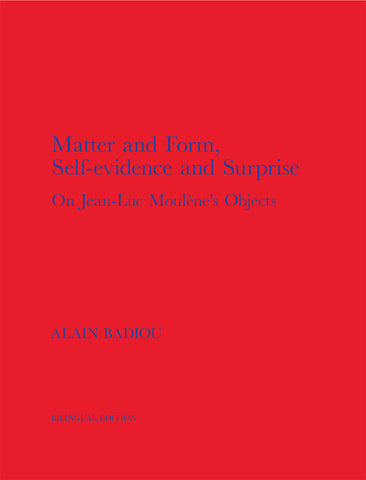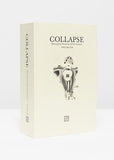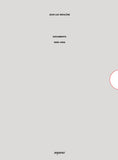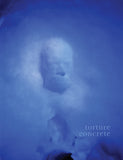Matter and Form, Self-evidence and Surprise: On Jean-Luc Moulène's Objects
Matter and Form, Self-evidence and Surprise: On Jean-Luc Moulène's Objects
Alain Badiou
May 2019
Sequence Press
Bilingual edition: English/French
Foreword by Miguel Abreu
Translated by Robin Mackay
Designed by General Working Group
Casebound, 203 x 152 mm, 96pp.
57 color images
ISBN 978-0-9975674-9-6
I see Moulène’s works as the artistic equivalent to an essential philosophical quest, the pursuit of a new peace, an absolute peace.
Like the great philosophers, Jean-Luc Moulène creates something which, rising up against the fatal violence of the world as it is, indicates the human spirit’s capacity to propose to all what we might paradoxically call an idealist materiality. “Idealist” in so far as, in the works of this artist, certain entirely unknown forms impose upon disparate materials—through the use of images, scans, topologies, digital manipulations and complex tools—a sort of startlingly clear and striking self-evidence. And “materiality” because, beneath the novelty of the form, beneath its mathematics and its digital glamour, lie the traces of old materials, timeless gestures—traces hidden by just a layer of brilliant color.
—Alain Badiou
In this unique essay, first delivered as a lecture during a panel discussion with the artist and philosopher Reza Negarestani, Badiou identifies and “dialecticizes” five Moulène objects with five conceptual formations from the history of Western philosophy. Aristotle’s complex of matter and form is called to mind to describe the inner logic of a routed, hard foam sculpture. A bronze statue with holes next activates Plato’s notion of participation of the concrete world in the “injured Idea of the Beautiful.” A small metallic and incomplete “angel,” further, engages Leibniz’s affirmation that “everything that exists is composed of an infinity of things.” Badiou’s musings then bring him to Victor Hugo while considering a broken and repaired plastic chair. A terrible Hand made of concrete, that seems to have “burst out of the earth,” cannot help but manifest something akin to the Freudian unconscious. Finally, a large-scale “red and blue monster” awakens in the philosopher the rudimentary mechanisms of the Cartesian cogito, the famous “I think, therefore I am,” with stunning inversions and variations.
Badiou refrains, of course, from claiming that Moulène thinks about any of these philosophers when making his specific works. What he points to, however, in this richly illustrated bi-lingual volume, is that the artist and his art are “on the side of philosophy.”
“Being on the side of philosophy,” says the author, “any one of Moulène’s objects is always, by itself, and beyond the secret process of its realization, a material proof, which is met with a contemplative pleasure, the pleasure of the possible existence, here and now, of new truths.”
Alain Badiou was formerly chair of philosophy at the Ecole Normale Supérieure and director of the Collège International de Philosophie in Paris. In addition to several novels, plays and political essays, he has published a number of major philosophical works, including Theory of the Subject (1982), Being and Event (1988), Manifesto for Philosophy (1989), Metapolitics (1998), and Logics of Worlds (2006). The Immanence of Truths, the final installment of his Being and Event trilogy was released in French at the beginning of 2018. A prolific and widely translated writer, Badiou is perhaps the last public intellectual in the tradition of Jean-Paul Sartre. He has been a political activist since a young age, and is a regular contributor to Le Monde, Libération and other French daily newspapers and magazines.
CONTENTS
Foreword
Matter and Form, Self-evidence and Surprise: On Jean-Luc Moulène's Objects
Hole, Bubble, Bump. Images of the exhibition
Préface
Matière et forme, évidence et surprise: Les objets de Jean-Luc Moulène
List of Works





